Some of the mushrooms KG and I found in Epping Forest. We managed to find loads of field blewits, which are edible (and delicious)!
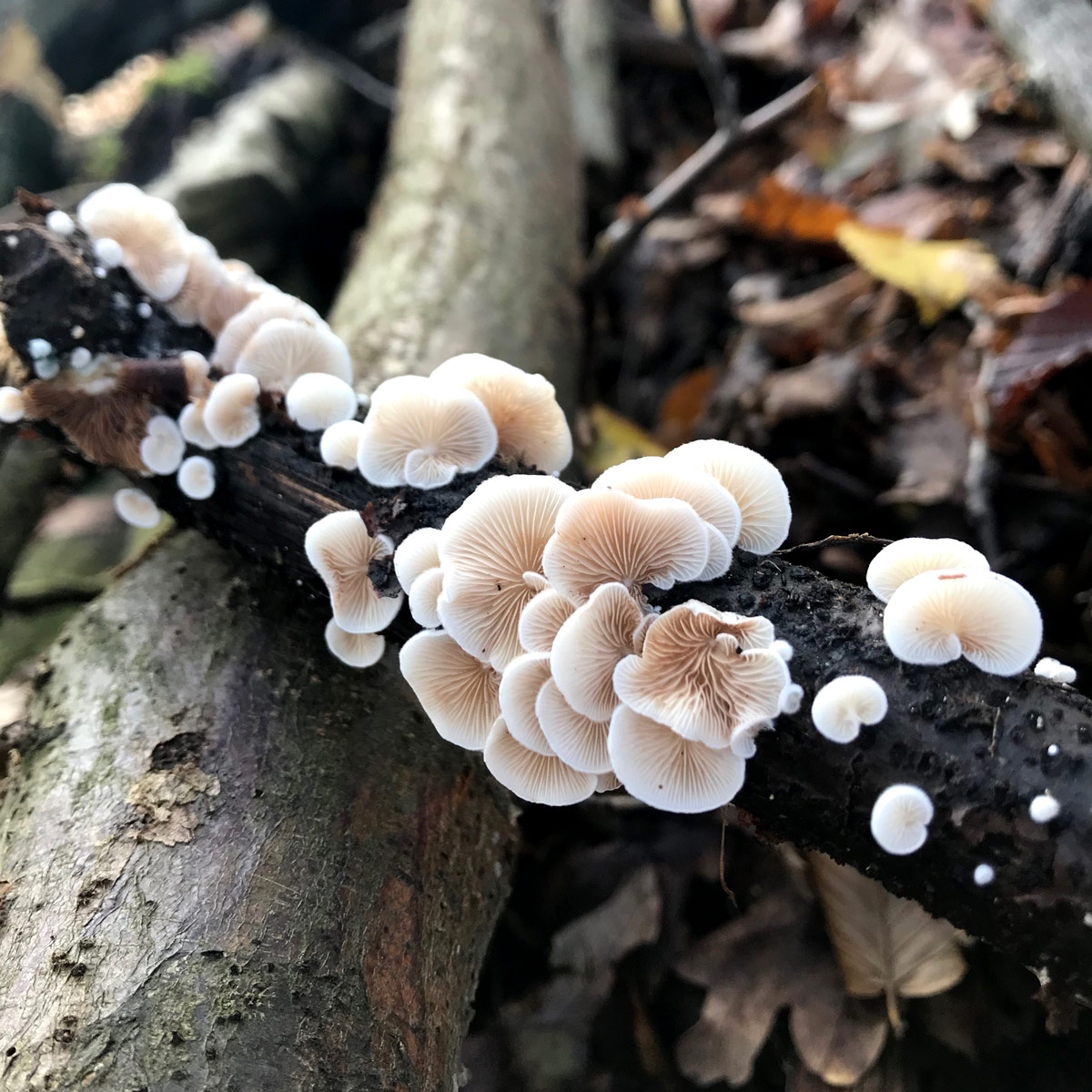
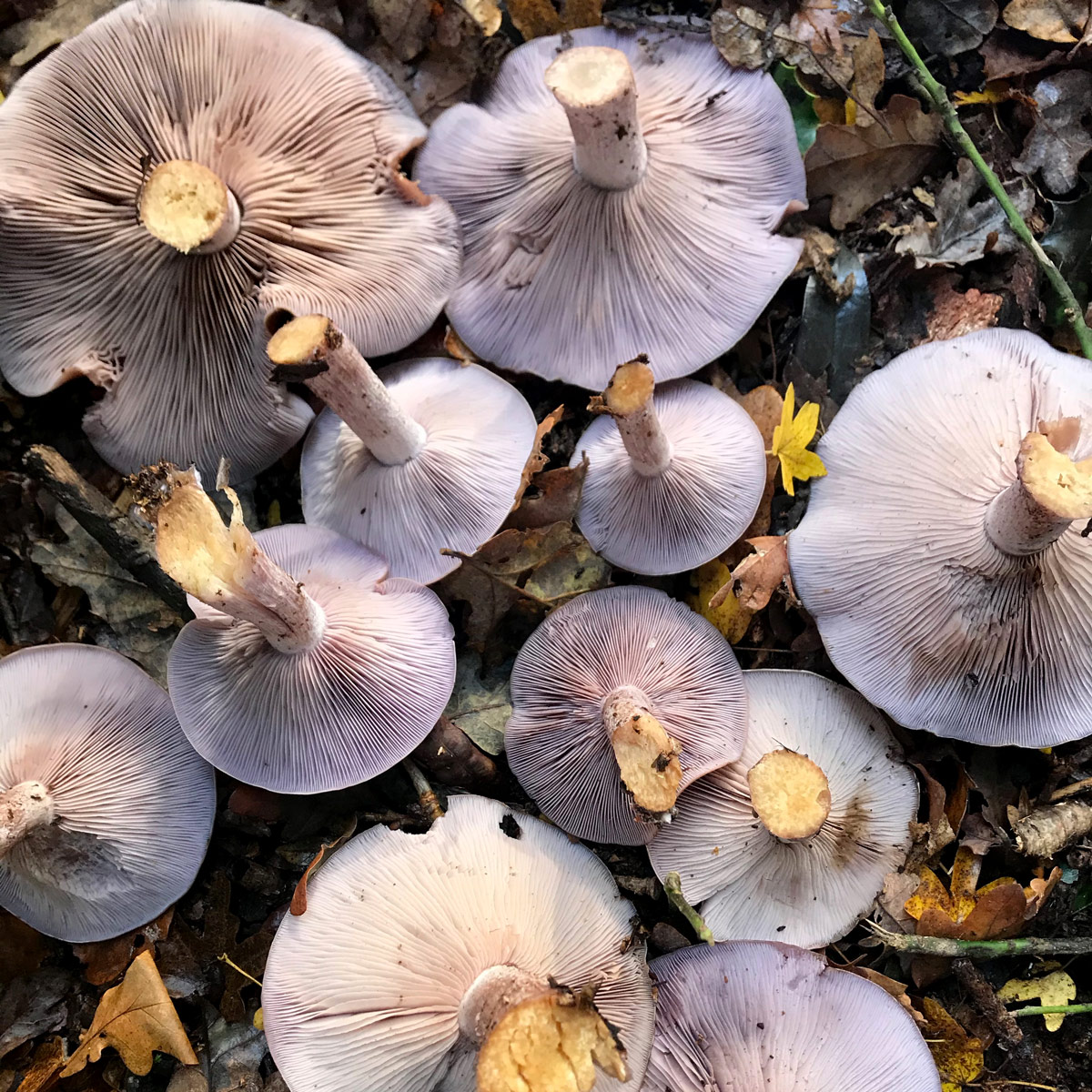
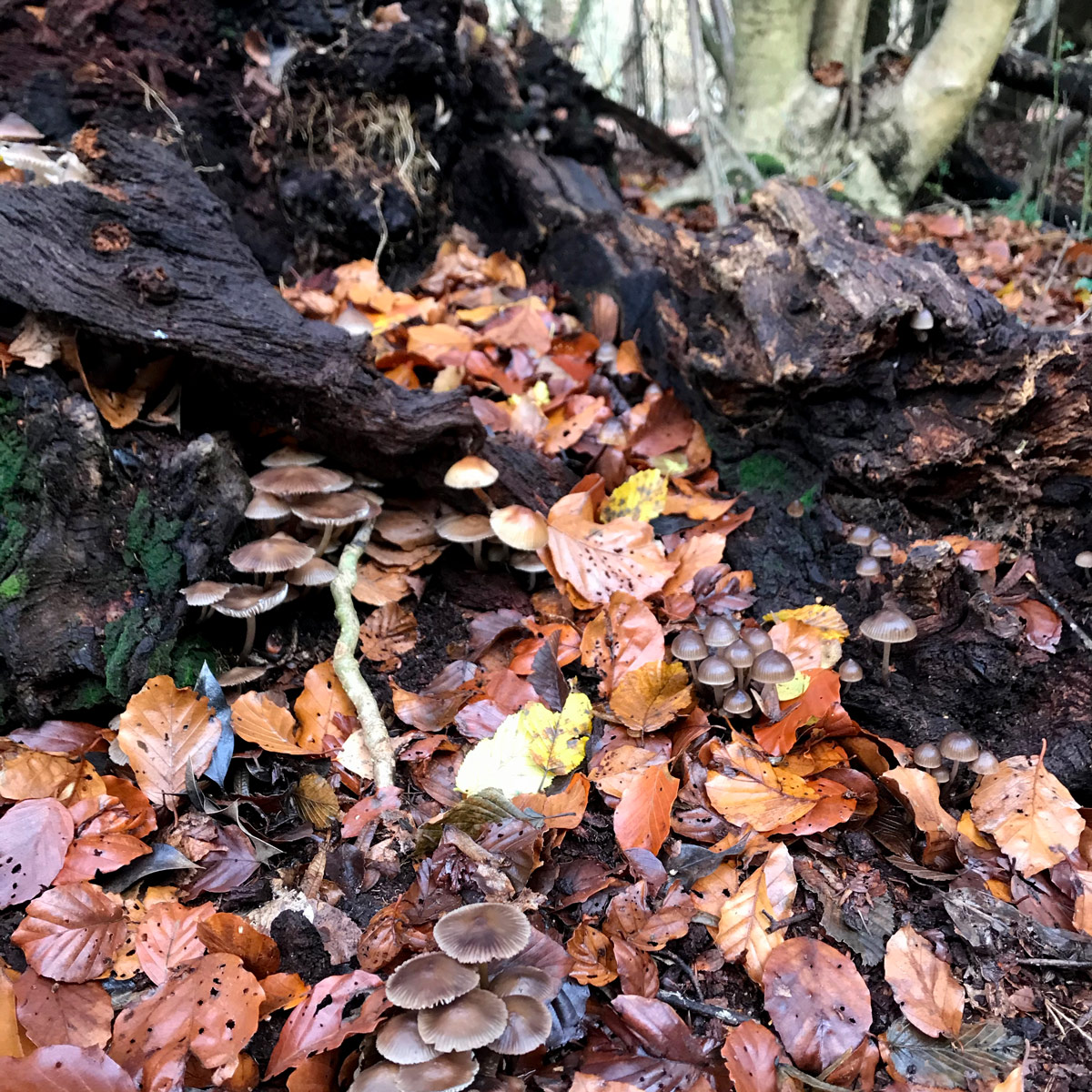
Some of the mushrooms KG and I found in Epping Forest. We managed to find loads of field blewits, which are edible (and delicious)!



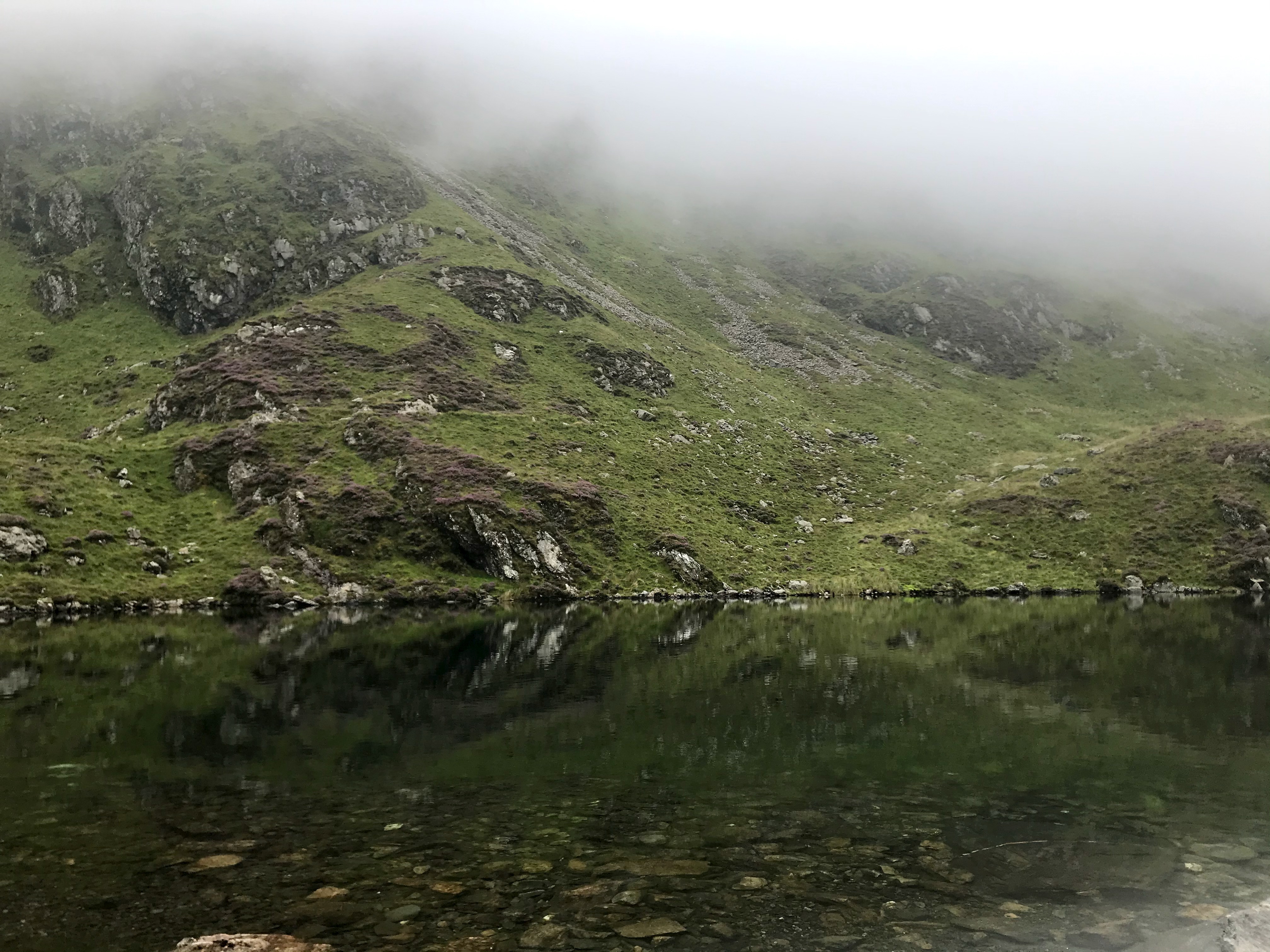
A very misty Llyn Cau, halfway up Cadair Idris in Wales.
We hiked most of this trail through low clouds. We noticed it getting warmer as we got closer to the peak, and then suddenly we were above the clouds and in brilliant sunshine.
We made a last minute decision to spend a month on La Gomera, one of the Canary Islands. After six months of rarely travelling outside north London, it feels surreal to be in such a different environment*.
The island is small, roughly circular and very mountainous. This weekend we went for a hike in Garajonay National Park, which was such a contrast to the valley where we’re staying.
The mountains catch the clouds blown in by the trade winds, which means the centre is covered in subtropical forest, called laurisilva. This is the largest remnant of the type of forest that once covered much of Europe and North Africa. It’s quite amazing to wander through… the trees are dripping with lichen and water droplets.

*This is also the closest you can get to the antipodes of Queensland, so I feel right at home.
October is mushroom season! Last Saturday was particularly bright and sunny after a few days of rain, which is perfect for mushrooms. We went to Hampstead Heath with a few friends who forage mushrooms regularly.
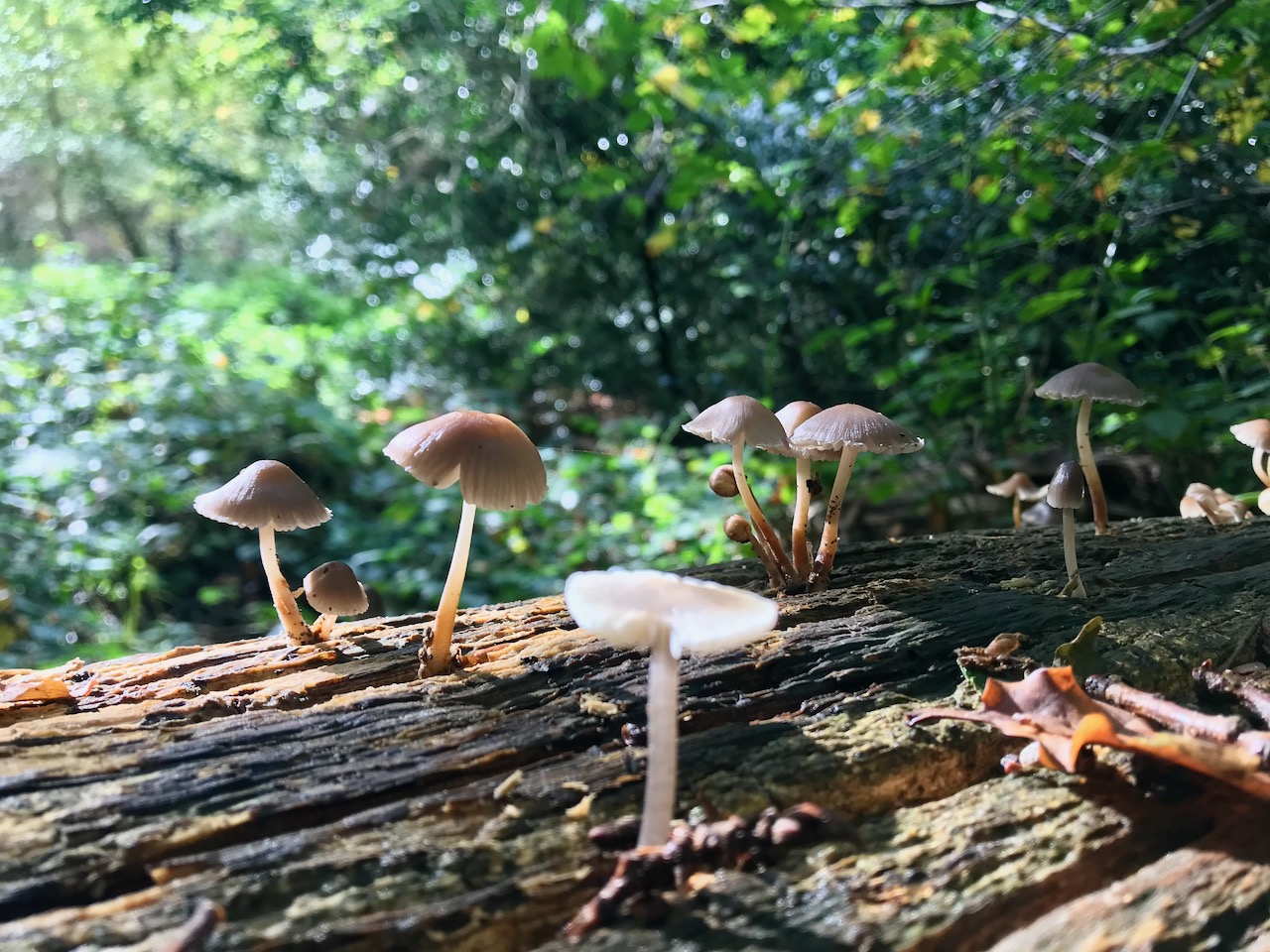
We were lucky and found so many different varieties including honey fungus, black-staining polypores, laughing gym, curry-scented milkcap, fruity brittlegill, porcelain fungus, shaggy scalycap and the iconic fly agaric. Most of these were either inedible or poisonous, so we left them alone after identifying them. Some, like the honey fungus, are edible but we didn’t pick them because we found so many other “choice” mushrooms.
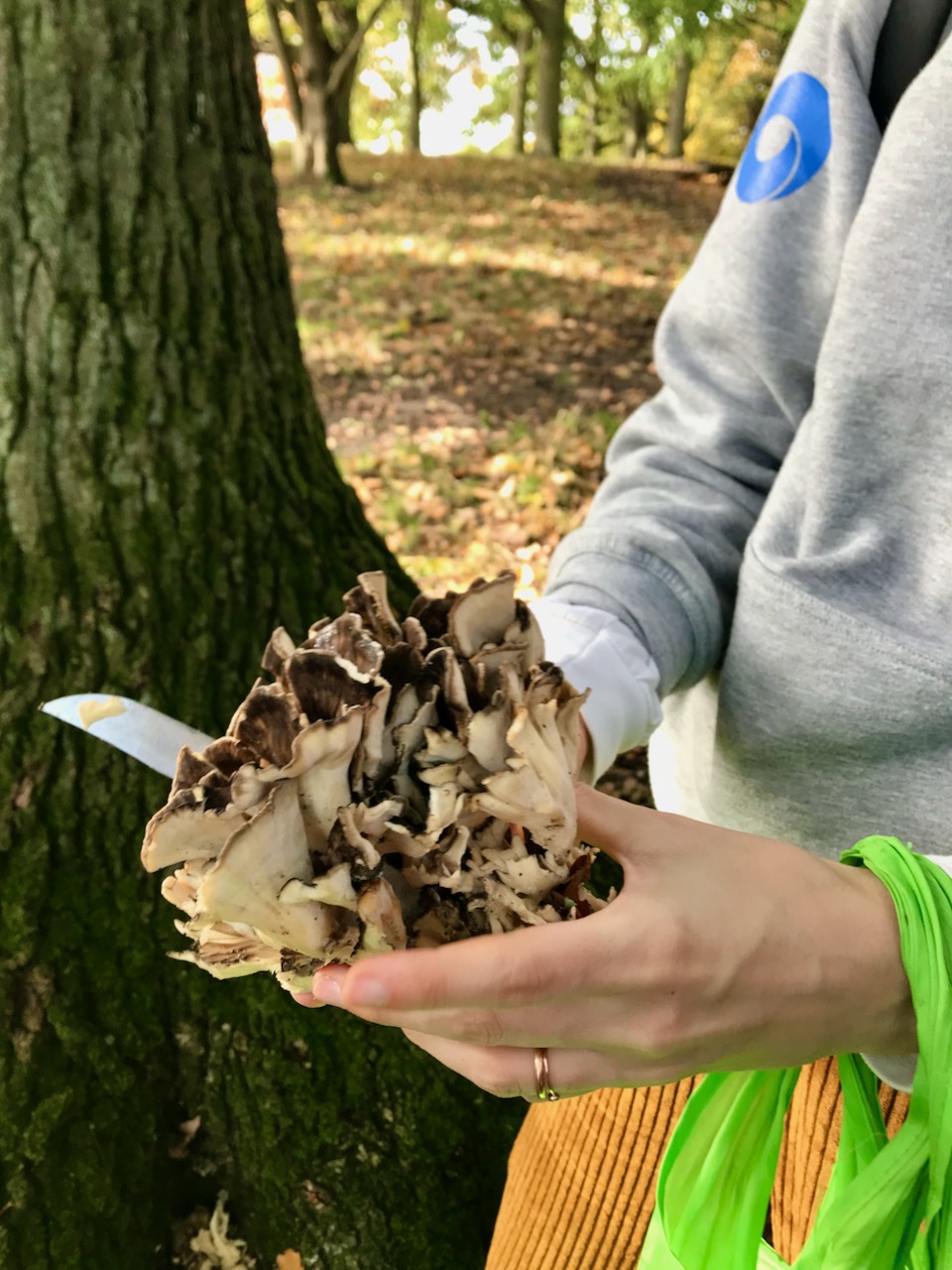
The tastiest find of the day was this hen of the woods. We also found some charcoal burners, parasols, cauliflower fungus and red cracked bolete, which we cooked and ate the next day (after extensive rounds of verification and double-checking.)
I enjoy the process of finding mushrooms in itself, even if we didn’t eat them afterwards. It’s all about paying careful attention. It requires a different way of looking: soft, out of the corners of your eyes. There are certain trees, like beech and oak, where they’re more likely to grow around. Once you learn how to see them, it’s like unlocking a hidden visual layer on the world. Suddenly, there are mushrooms everywhere.
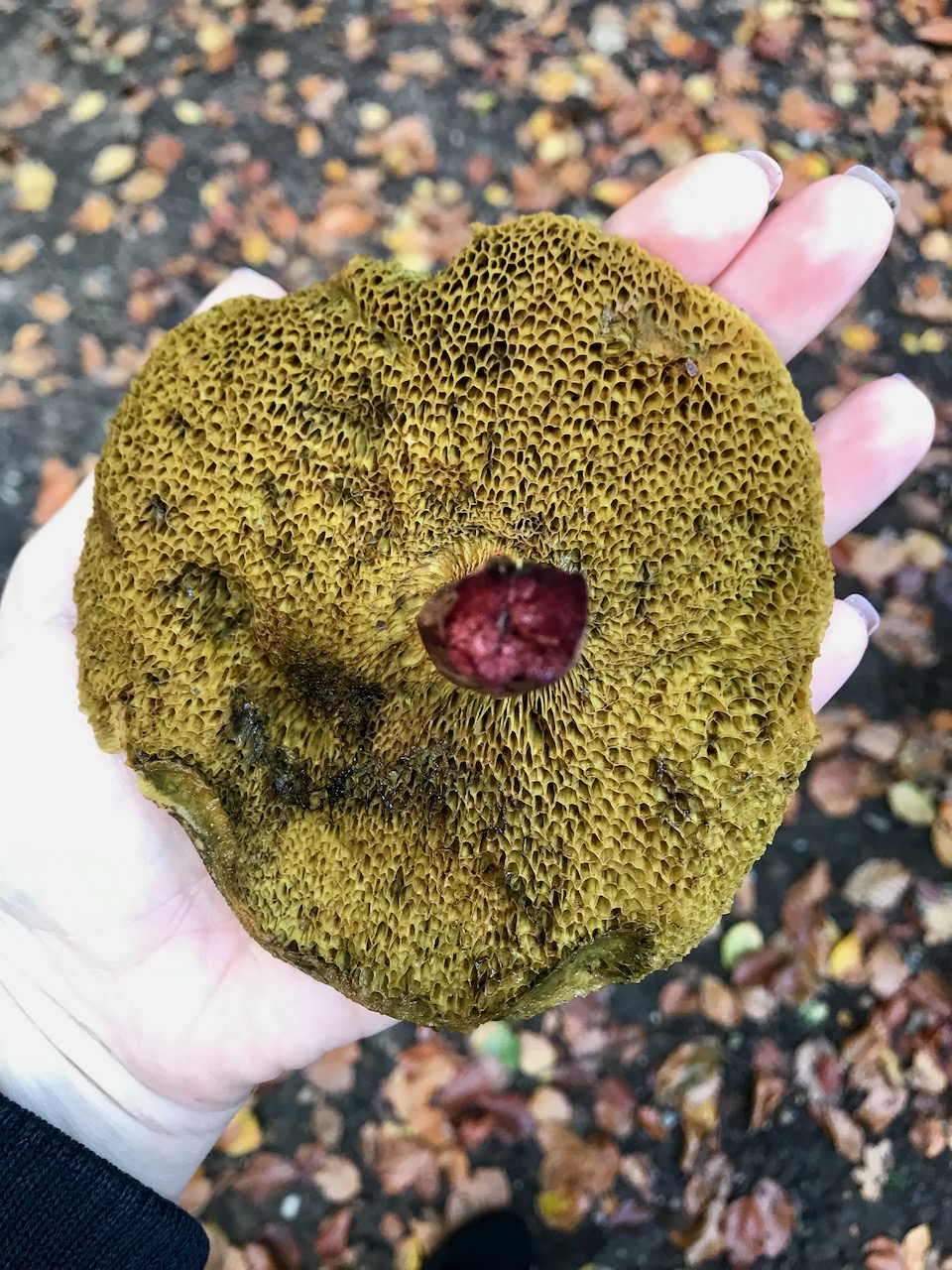
To identify the species, you need to pay even closer attention, examining the mushroom’s structure, shape, texture, gills and smell. I’m following Emergence Magazine’s Writing From the Roots course at the moment and identifying mushrooms reminds me of some of the writing exercises we’ve done: gradually zooming in on something and describing it in closer and closer detail each time.
It takes loads of practice to safely forage mushrooms and I’m not sure we would have eaten any without the guidance of our friends. They recommended two apps for identifying mushrooms: Picture Mushroom and Shroomify. I’ve heard that Mushrooming with Confidence is a really useful identification guide that only includes mushrooms that aren’t easy to mix up with a poisonous doppelgänger. There are also good videos online by Wild Food UK.
🍄